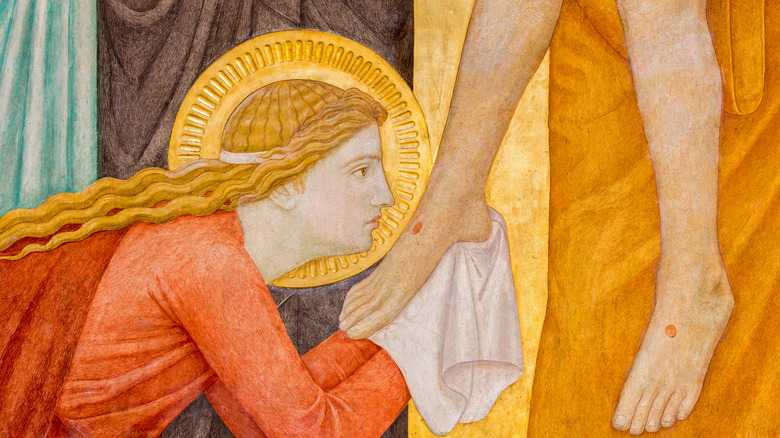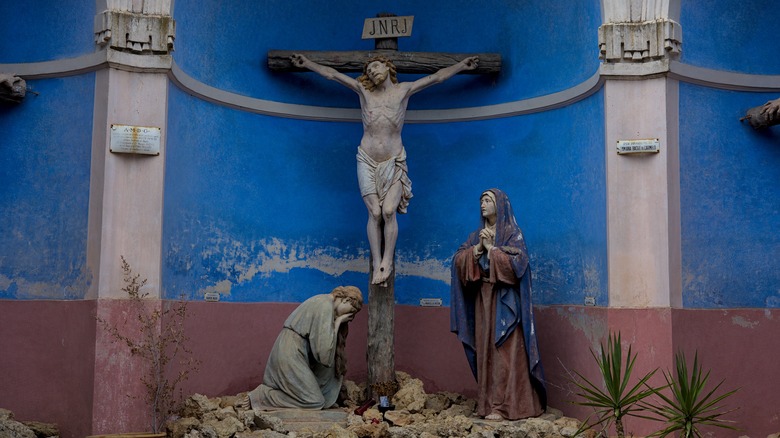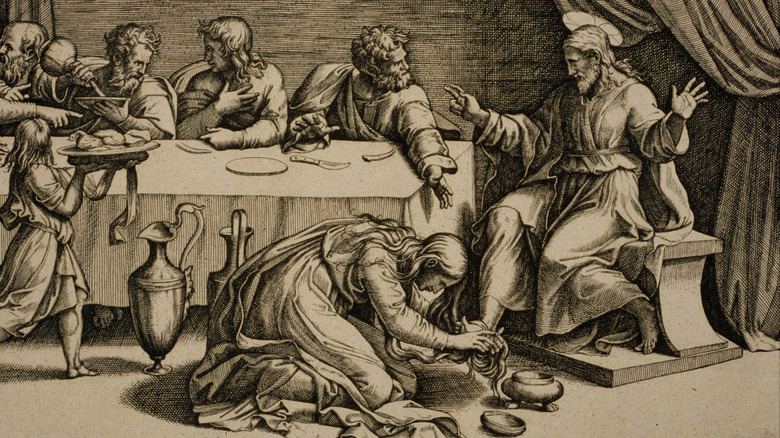What Everyone Gets Wrong About Mary Magdalene
For a fairly minor biblical character, Mary of Magdala, aka Mary Magdalene, sure gets a lot of attention — and not necessarily without good reason. No doubt, author Dan Brown's 2003 megahit "The Da Vinci Code" fed much of the resurgent interest in Mary Magdalene, as his book sold over a bonkers 80 million copies worldwide – a testament to how it touched the public's nerve. In recent decades Magdalene has been recast not as only the potential wife of Jesus, but a figure deemed contentious by the early Christian church, and whose actions, prominence, and role were suppressed.
No matter one's personal opinions about Mary Magdalene, in the end, we've only got what certain ancient texts do or do not say about her. Outside of the canonical Bible, texts like the Wisdom of Jesus Christ depict Magdalene as just another disciple of Jesus. The Gospel of Mary, contrarily, portrays Magdalene as a figure of high clerical importance within the early church, and a favorite of Jesus. And of course, the Gospel of Philip is the text that states that Mary was Jesus' "companion" and that Jesus "used to kiss her often on the mouth."
Nowhere, however — including in the Bible — does it say what some have come to take for granted about Magdalene: that she was a "prostitute". As Christianity.com explains, this incorrect assumption boils down to a statement made by Pope Gregory I in the 6th century equating a separate biblical character with Mary Magdalene.
A disciple cured of demons
It might come as a surprise to some Christians — and non-Christians familiar with such stories — that Mary Magdalene was not a reformed sex worker who shed her former life to piously follow Jesus around. Those with doubts can look to the official Bible itself, which depicts Magdalene as a recurring character who pops up at certain, important events in the life of Jesus. Rather than describe Magdalene as freed from a life of sex work, Luke 8 and Matthew 16 both say that Jesus cleansed Magdalene of "seven demons." After this, she became a disciple of Jesus, and that's that. While some might interpret these "seven demons" as representative of a biblically wayward lifestyle, that's a figurative stretch without any grounding in the available evidence.
Besides this anecdote about Magdalene and her life, all four gospels — Matthew, Mark, Luke, and John — describe Mary as present when Jesus was crucified. Mark 15 says that she and Mary, Jesus' mother, saw the location where Jesus was buried, while Mark 16 describes an angel informing Magdalene that Jesus had come back to life when she went to visit Jesus in his tomb. Continuing in the narrative, but moving to another gospel, John 20 describes Magdalene being the one who goes back to the disciple Peter and informs him about Jesus' resurrection. After this Magdalene vanishes from biblical events, but has only grown larger in our shared, cultural memory.
Not the 'sinner' from the book of Luke
As stated, we've got Pope Gregory 1 to thank for associating Mary Magdalene with another biblical character described as living "a sinful life," which many interpret as referring to sexual sin. History tends to hold Gregory 1 in high regard, at least in regard to his management of the church and political dealings. But when it came to church doctrine, he made a leap in judgment in 591 C.E. by declaring Magdalene to be the "sinful woman" from Luke 7. Luke 7 describes a well-known vignette about said woman using a jar of perfume plus her own tears to wash Jesus' feet. In the vignette, when disciples like Simon call out the woman as a "sinner," Jesus uses the opportunity to deliver a teachable moment about forgiveness.
Despite the Bible not naming this woman, let alone identifying her as Mary Magdalene, Pope Gregory 1 came to this precise conclusion. From that point on, the pope's word is what it is, the connection stuck. Gregory even said that Mary Magdalene, the feet-washing lady, and another Mary from Luke 10 — Mary of Bethany — were all the same person. Fast forward over 1,400 years and we can find whole articles online stating as fact that Mary Magdalene was the sinful woman in the story.
We mentioned earlier that some believe that the Christian church actively suppressed Magdalene's prominence in narratives of Jesus' life and after. In this scenario, Pope Gregory 1's statement relating Magdalene to the "sinful woman" from Luke 7 could come across as part of a smear campaign against Magdalene.


